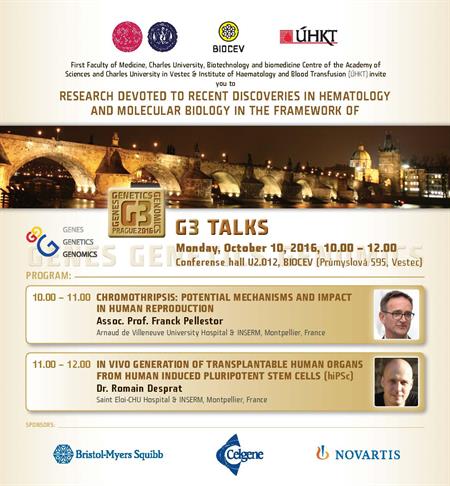
Dr. Franck Pellestor, Associate Professor, Arnaud de Villeneuve University Hospital & INSERM, Montpellier, France
Synopsis:
The recent discovery of a new kind of massive chromosomal rearrangement, baptized Chromothripsis (chromo for chromosomes, thripsis for shattering), strongly modifies our understanding on the mechanisms for the genesis of complex chromosomal rearrangements. Firstly described in cancer, and then in constitutional rearrangements, chromothripsis is characterized by the shattering of one (or a few) chromosome (s) segments followed by a chaotic reassembly of the chromosomal fragments, occurring during one unique cellular event. The molecular causes of chromothripsis are still debated. Several mechanisms have been proposed, involving abortive apoptosis, micronuclei formation, and alteration of p53. The remarkable point is that all these mechanisms have been identified in the field of human reproduction as causal factors for reproductive failures and chromosomal abnormalities. Consequently, it was important to present this unexpected catastrophic phenomenon in the light of the fertilization and the early embryonic development, in order to discuss its potential impact in human reproduction.
Dr. Romain Desprat, Saint Eloi-CHU Hospital & INSERM, Montpellier, France
Synopsis:
Shortage of donor organs has become a major obstacle to the expansion of organ transplantation programs. Interspecies chimaeras generated with induced pluripotent stem (iPSC), suggest that it will soon be possible to produce human organs. It has been demonstrated that rat iPSC injected into a mutant mouse blastocyst in which the development of a certain organ was precluded by genetic manipulation allowed the development of rat organs in these chimaeras. In theory, this blastocyst complementation method could be used to produce human organs. One of the greatest challenge for interspecies chimera for developing this approach with human organs is whether the method will work when attempting to cross the interspecies boundary that exists between human iPSC and the host blastocyst. I propose to study rules underlying this «xenogenic barrier» in mice in vivo and in vitro in pig blastocysts.
G3 Talks organizers:
Education program of G3 Talks is supported by: